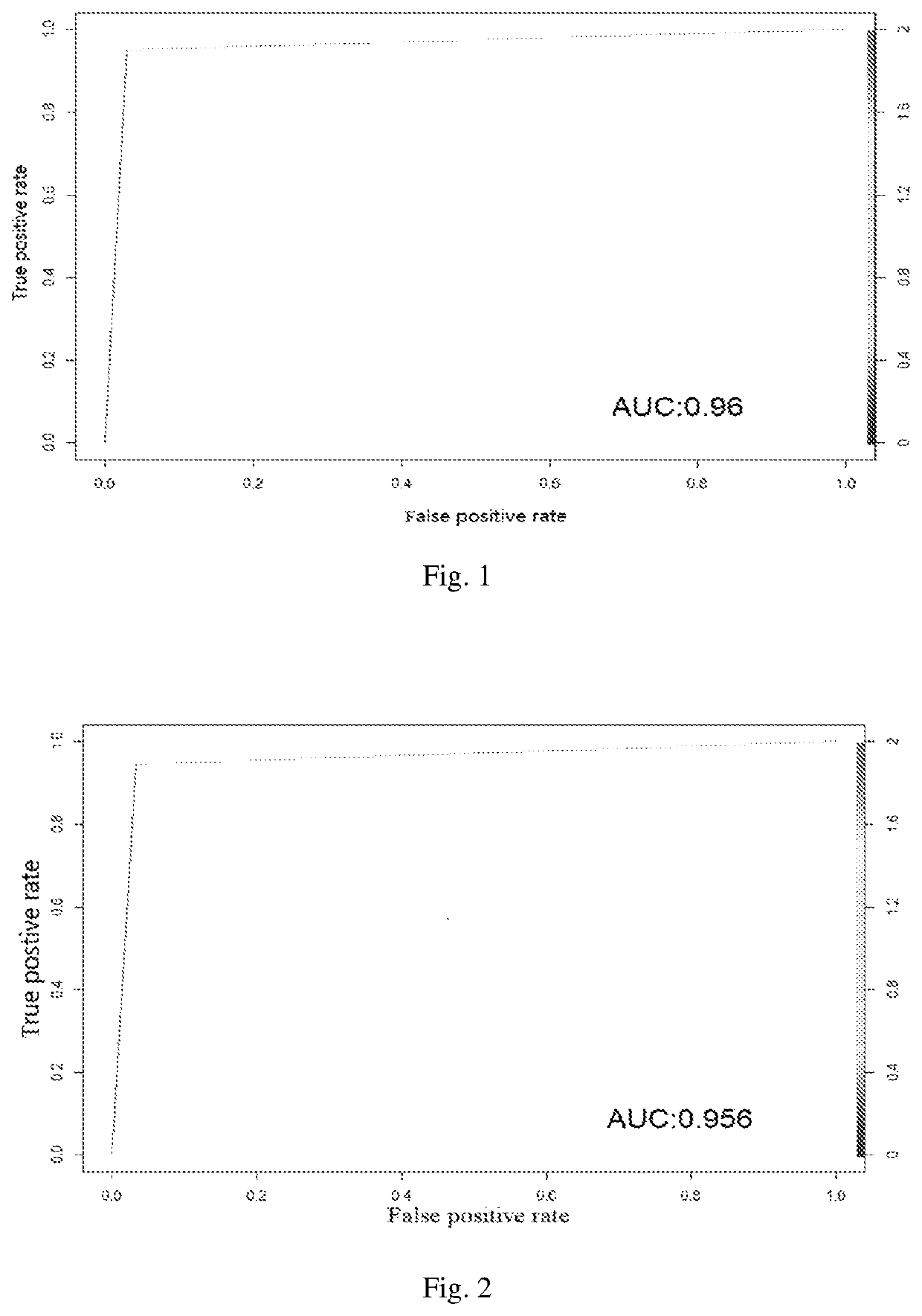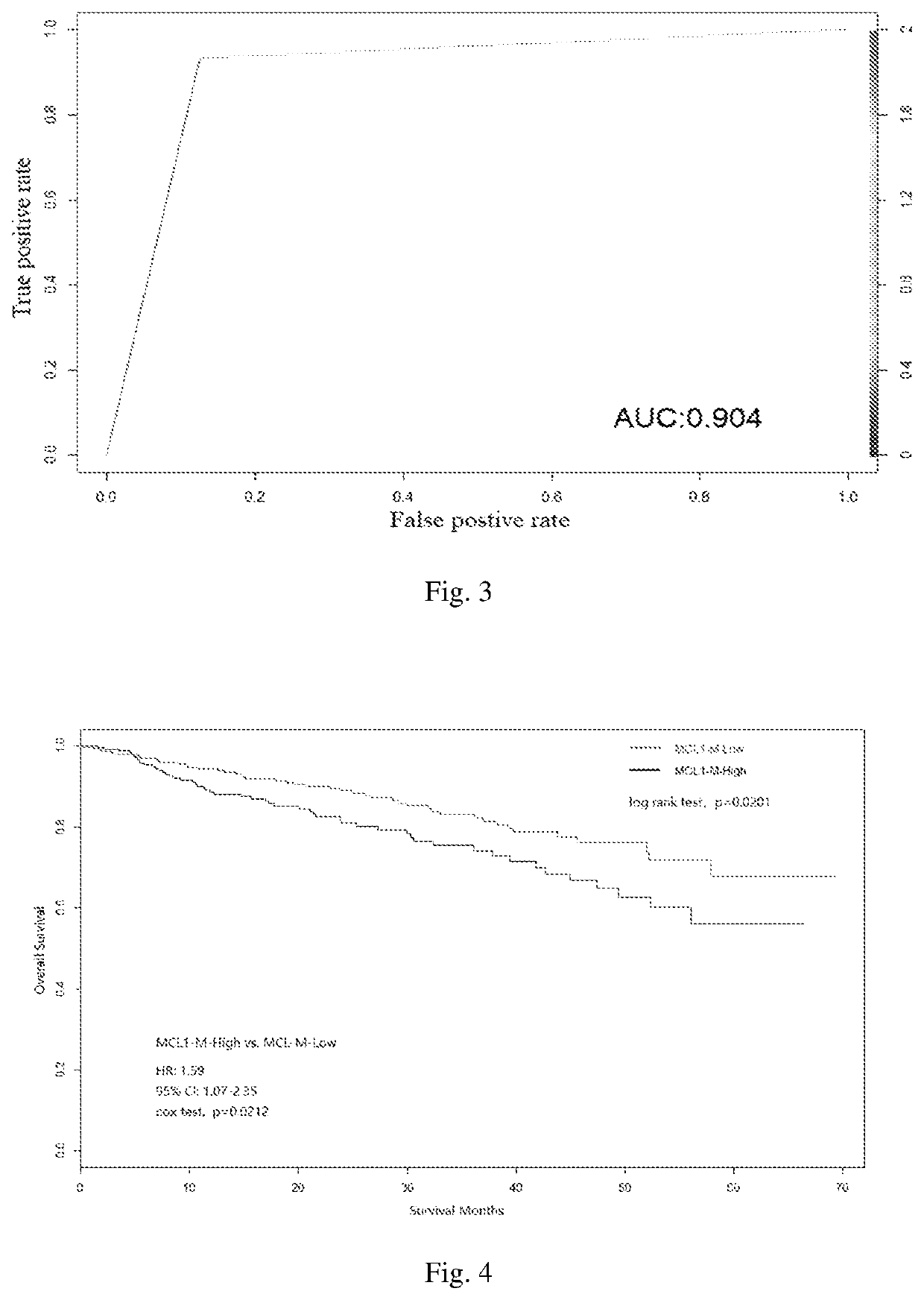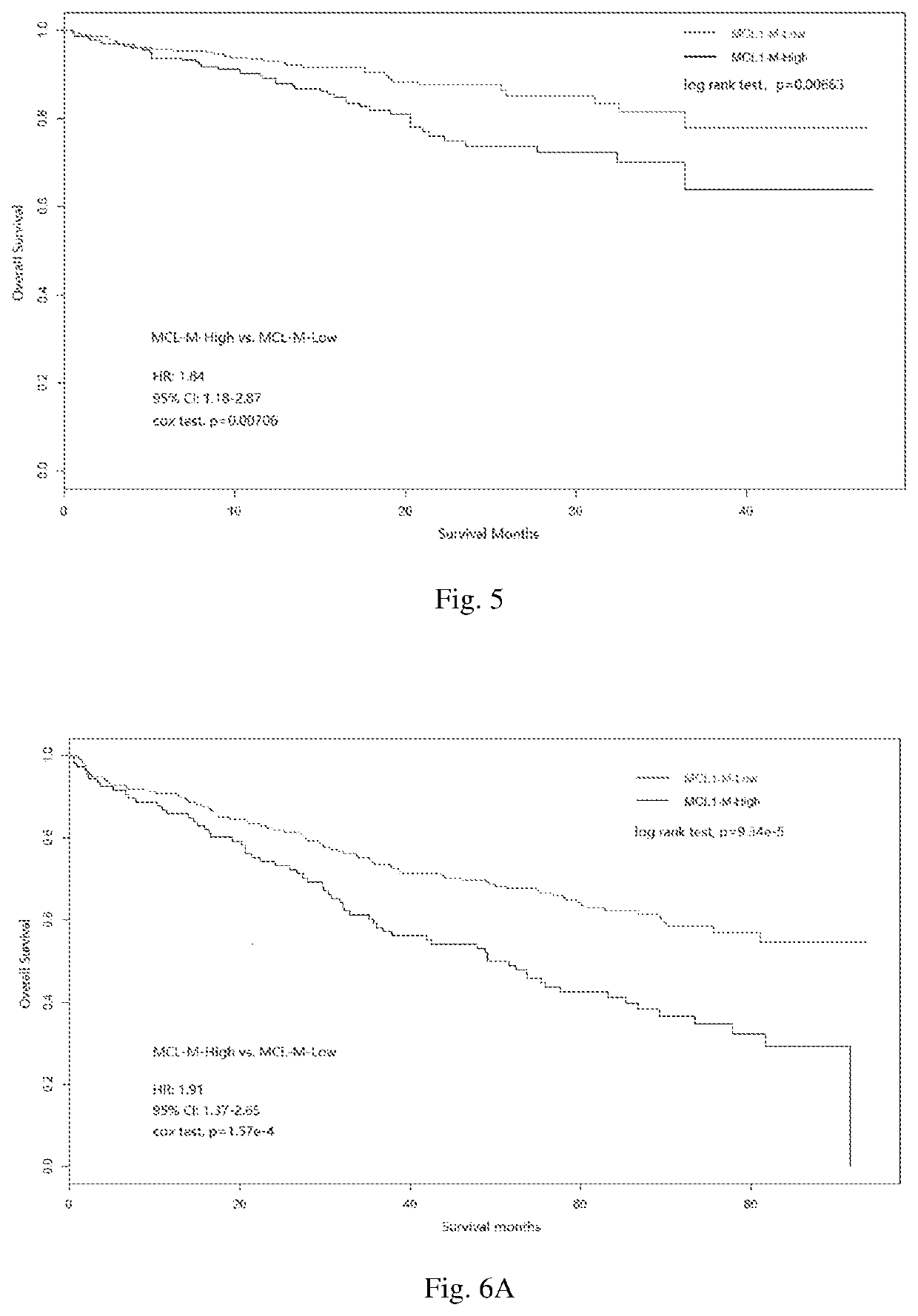Molecular typing of multiple myeloma and application
a multiple myeloma and molecular typing technology, applied in the field of biotechnology, can solve the problems of increasing the incidence of mms, becoming a severe health risk to the elderly population, and yet incurable mms, and achieve the effect of predicting the prognostic survival
- Summary
- Abstract
- Description
- Claims
- Application Information
AI Technical Summary
Benefits of technology
Problems solved by technology
Method used
Image
Examples
example 1
of Molecular Diagnostic Markers for Multiple Myeloma and Implementation of Molecular Typing
[0080]From the MM gene expression dataset GSE2658 published by NCBI, a gene module co-expressed with MCL1 (MCL1-M), containing 87 genes, was identified using Pearson correlation coefficient analysis. Based on the foregoing, 46 genes upregulated in MM samples with low expression of MCL1-M were also identified. For stable classification outcomes, 36 genes among the above-mentioned 133 genes with low classification capacity were excluded, 97 genes with robust differential expression with relatively high level of expression were selected.
[0081]These 97 genes are as follows: ACBD3, ADAR, ADSS, ALDH2, ANP32E, ANXA2, ATF3, ATP8B2, CACYBP, CAPN2, CCND1, CCT3, CDC42SE1, CERS2, CHSY3, CLIC1, CLMN, COPA, CSNK1G3, DAPS, DENND1B, ENSA, EPRS, EPSTI1, EVL, FAM13A, FAM49A, FLAD1, FRZB, GLRX2, HAX1, HDGF, HLA-A, HLA-B, HLA-C, HLA-F, HLA-G, IL6R, ISG20L2, JTB, KLF2, LAMTOR2, LDHA, MCL1, MOXD1, MRPL24, MRPL9, MV...
example 2
on of Naïve Bayes Prediction Model in the Prediction of Survival of Patients with MM
[0091]I. Data set GSE2658
[0092]Based on the expression data of the 97 classifier genes in 551 pre-treated MM samples in GSE2658 database, the 551 samples were classified using the Naïve Bayes prediction model developed in Example 1, resulting in 249 MCL1-M high MMs and 302 MCL1-M low MMs.
[0093]The follow-up time for 551 patients of MMs was 72 months. The results of survival analysis (Kaplan-Meier analysis and Cox regression analysis) are shown in FIG. 4. Distinct survival was observed between MCL1-M high and MCL1-M low subtypes, the overall survival in patients with MCL1-M high MM was significantly lower compared with the overall survival in patients with MCL1-M low MM (log-rank test, p=0.0201; hazard ratio 1.588, p=0.0212).
[0094]Thus, based on the expression of the 97 classifier genes in MCL1 gene group, the naïve Bayes prediction model enabled the prediction of prognosis of patients with MM.
[0095]I...
example 3
ular Diagnostic Markers and Classification of Multiple Myeloma are Predicting Whether the Test Patient can be Treated with Bortezomib
[0102]The gene expression data in GSE19784 were generated from MM patients enrolled in a randomised phase III clinical trial (the HOVON-65 / GMMG-HD4 trial), the treatment details for all patients were documented. The patients were randomly assigned into the two groups receiving either a drug combination of VAD (vincristine, doxorubicin, and dexamethasone; 155 patients) or PAD (bortezomib, doxorubicin, and dexamethasone; 148 patients). The difference therebetween is that the PAD combination contains bortezomib. All the expression data were derived from samples before treatment.
[0103]Using naïve Bayes prediction model, the MM samples were classified as the MCL1-M high and MCL1-M low subtype (as described in Example 1). The survival analysis (Kaplan-Meier analysis and Cox regression analysis) were separately analysed in MCL1-M high samples (51 with PAD tre...
PUM
| Property | Measurement | Unit |
|---|---|---|
| follow-up time | aaaaa | aaaaa |
| follow-up time | aaaaa | aaaaa |
| follow-up time | aaaaa | aaaaa |
Abstract
Description
Claims
Application Information
 Login to View More
Login to View More - R&D
- Intellectual Property
- Life Sciences
- Materials
- Tech Scout
- Unparalleled Data Quality
- Higher Quality Content
- 60% Fewer Hallucinations
Browse by: Latest US Patents, China's latest patents, Technical Efficacy Thesaurus, Application Domain, Technology Topic, Popular Technical Reports.
© 2025 PatSnap. All rights reserved.Legal|Privacy policy|Modern Slavery Act Transparency Statement|Sitemap|About US| Contact US: help@patsnap.com



